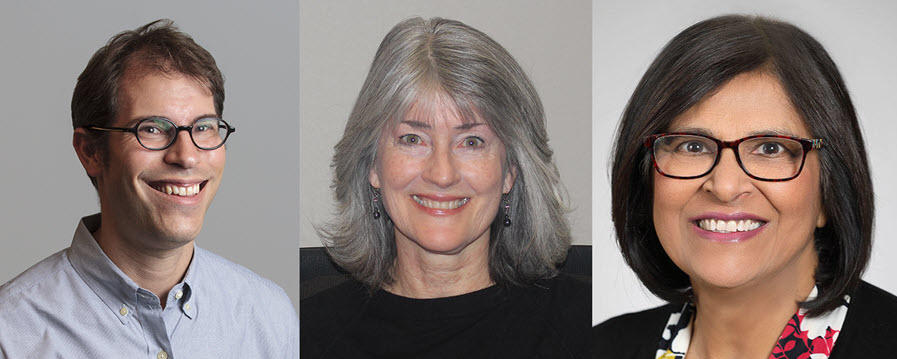Neal Freedman, Rashmi Sinha, Mary Ward Elected to AES
, by Jennifer K. Loukissas, M.P.P.
In March 2023, Neal D. Freedman, Ph.D., M.P.H., senior investigator in the Metabolic Epidemiology Branch (MEB), Rashmi Sinha, Ph.D., senior investigator, MEB, and Mary H. Ward, Ph.D., senior investigator in the Occupational and Environmental Epidemiology Branch, were elected to the prestigious American Epidemiological Society (AES), an honorary society dedicated to epidemiology. The mission of the AES is to provide a scientific forum for senior epidemiologists, who engage in a lively interchange of ideas with their peers at each annual meeting.
Each year, individuals are nominated and evaluated on the basis of the quality and impact of their epidemiologic accomplishments and contributions; academic activities, such as teaching and mentoring; and other aspects of professional work, including administrative leadership and community service.
“This prestigious honor was bestowed upon three very fitting leaders in epidemiology,” said Stephen J. Chanock, M.D., Division Director.
Below are the summaries accompanying their nominating materials.
Dr. Freedman is nationally and internationally recognized for major contributions to liver cancer, gastrointestinal cancer, and tobacco epidemiology, conducting novel and highly collaborative studies that have substantial public health impact.
Dr. Sinha is nationally and internationally recognized for interdisciplinary research that elucidates both dietary exposures and biological mechanisms associated with cancer risk, with an emphasis on processed and red meat and the impact of the microbiome on cancer risk.
Dr. Ward leads important cancer epidemiologic research to address environmental health questions of global public health concern related to drinking water contaminants, pesticides, and persistent organic pollutants. Her major areas of research are the carcinogenicity of nitrate, nitrite, and N-nitroso compounds and environmental and occupational risk factors for childhood cancer and thyroid cancer. Additionally, she develops and uses novel exposure assessment approaches that include state-of-the-art geospatial methods and environmental sampling.
